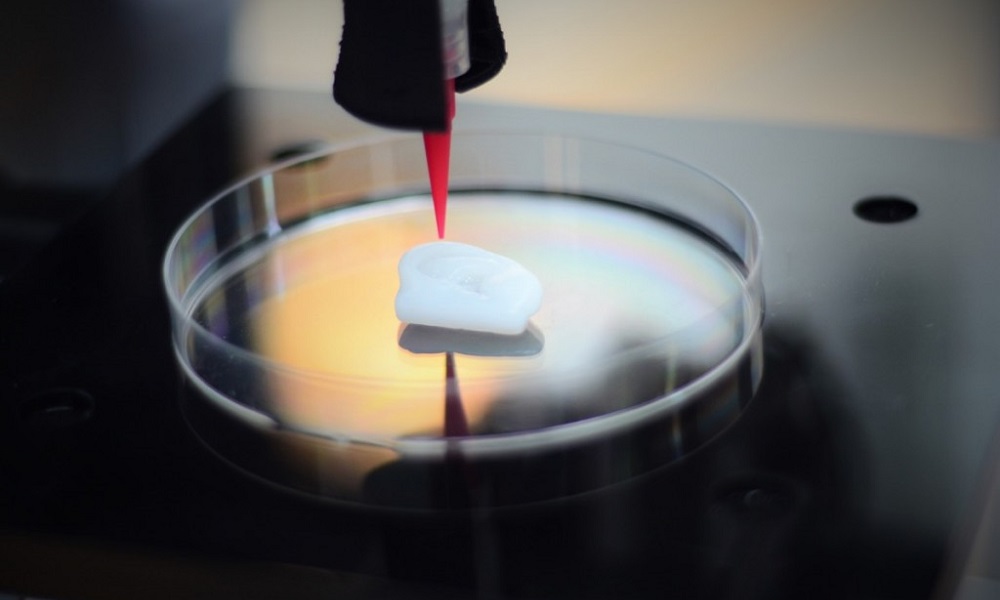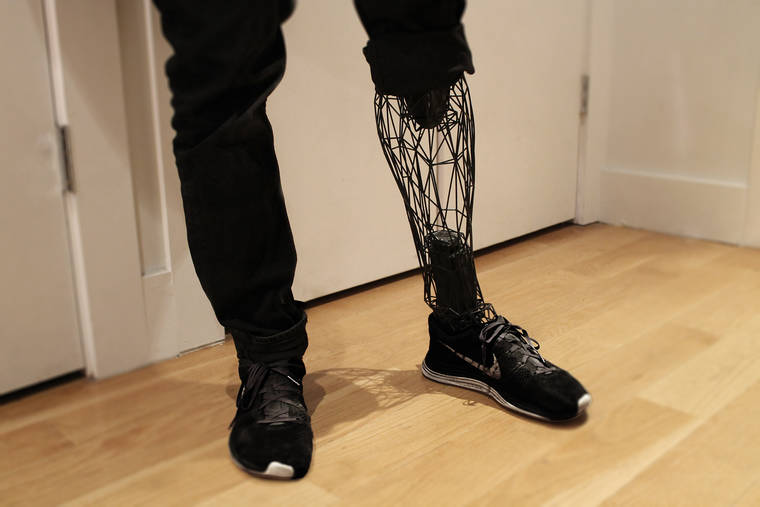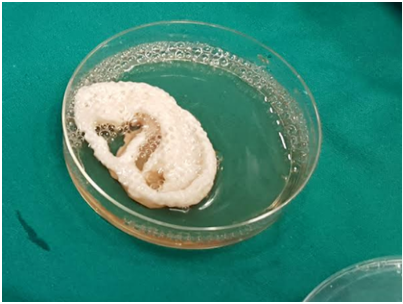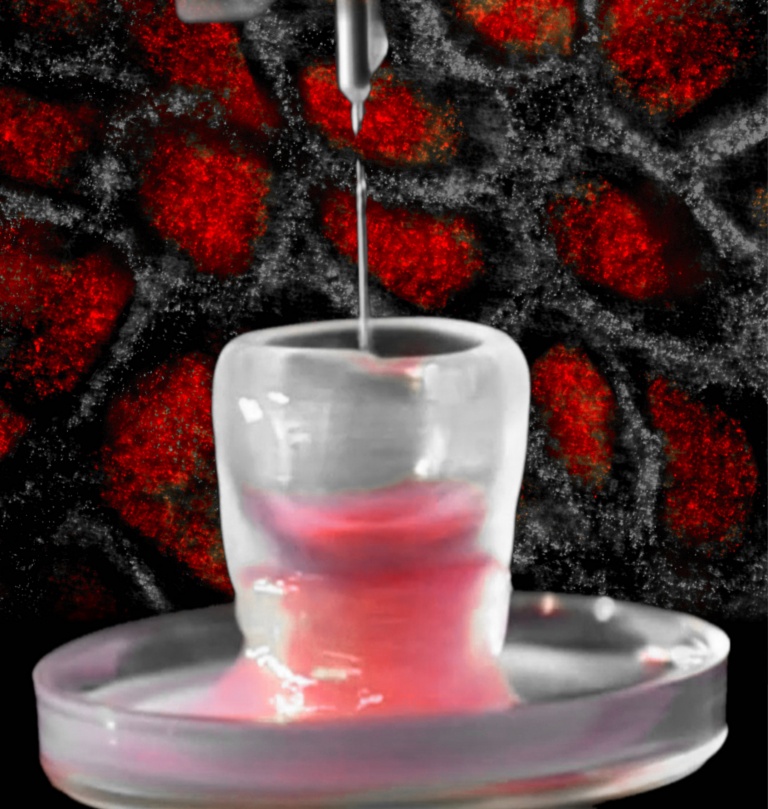3D bioprinting: What can we achieve today with a 3D bioprinter?
Posted By Lucie Gaget on Feb 21, 2018 | 0 comments
We recently saw in a blogpost what to make with a 3D printer and 3D bioprinting is actually one of the most impressive thing to do with a 3D machine. We’ve already talked about bioprinting and 3D printed organs on Sculpteo’s blog. A lot of new things have been made since then as the 3D printing technology is evolving really fast. That is why we wanted to give you an update, with a great overview of what it is actually possible to do with bioprinting today. 3D bioprinted tissues, 3D bioprinted human organs, and other impressive 3D structures are now printable and revolutionizing the medical field. In order to understand how all of this could really help the medical industry, we made a selection a the latest and biggest experimentations in bioprinting. This way, you will see all the advanced solutions experimented by medical researchers.
In this blogpost, we will see how 3D bioprinting works, what are the experiments that have been made, and how promising 3D bioprinters are.
3D printing in the medical industry
Obviously, additive manufacturing is becoming a great asset for the medical industry. This printing technology can be used both for prototyping and production. There are even 3D modeling software dedicated to the medical industry.
http://www.ufunk.net/en/tech/exo-prosthetic-leg/
The additive manufacturing technology allows to reduce costs and to produce customized parts more easily and way faster than with traditional manufacturing processes. With the development of new 3D printers and new 3D printing materials such as biocompatible materials, it is becoming possible to print a lot of different things for the medical sector. Indeed, 3D printing can be used for various applications, even when it comes to the healthcare community: it is allowing to create tools for surgeons, but also implants and prosthesis custom-made for the patients
Additive manufacturing is really becoming interesting, especially to create devices adapted to the needs or the morphology of the patients. But what if instead of prosthesis, it could be soon possible to print human body parts?
What is 3D bioprinting and how does it work?
To make it simple, 3D bioprinting is the use of the 3D printing technology to create living tissues and organs. There are different steps to follow in order to get a bioprinted structure. As it is an additive manufacturing technique, it is working by adding layers of material.
First, the perfect 3D bioprinting material has to be chosen or developed. Is it to create human skin tissue? Organs, cartilage or body parts? Then, a 3D modeling software is needed in order to design the part that will be bioprinted. The 3D bioprinter will then be able to print automatically the 3D model, layer by layer. Maturation is also part of the process for bioprinting, because cells have to grow and proliferate, this can’t be done instantly.
The bioprinting process uses bioinks, a material allowing the adhesion and proliferation of living cells. These bioinks are hydrogel biomaterials, providing support to the cell while they produce their own natural extracellular matrix.
Bioprinting: An impressive and useful technology
Applications of 3D bioprinting could be numerous. You can easily see the diverse advantages of this technology. For example, it could create human tissue for burn victims. It is also a way to create human organs, in order to perform organ transplants. There is not enough donors and bioprinting could be an excellent fast and life saving solution. The 3D bioprinting technology could allow to create various tissue structures, such as kidney tissue, skin tissue. Even blood vessels and bones are printable. This is definitely offering new possibilities in terms of tissue engineering and regenerative medicine.
It is also a great way for medical researchers to make laboratory tests. For example, instead of testing on animals, it is becoming possible to test directly on human tissue or organs as these bioprints have the exact same properties and reactions.
Various 3D bioprinters and biomaterials have been developed
Obviously, bioprinting can’t use a traditional printer to create living cells and 3D printed organs. 3D bioprinting is complex, this process requires specific machines in order print with special biomaterials. This lead to the development of diverse printing technologies, allowing tissue fabrication!
For example, companies such as Cellink are developing bioinks and new bioprinters. The bioinks developed by this company are allowing to create cartilage, skin, bone, and even muscle. These researchers launched the Bio X 3D printer, making it possible to print human tissues and organs with a great accuracy!
To see how this 3D bioprinter works, watch the video below:
Other revolutionary 3D bioprinters have been developed, but they are not really looking like traditional printing machines. Meet the BioPen, a mobile bioprinter allowing to draw new cells. This device, developed by Australian surgeons, allows to repair damaged bones and cartilage directly with a pen. The bioink is extruded on the surface of the bone and then solidified by the UV light of the pen.
As you can see, tissue engineering and regenerative medicine are now really going further with these new 3D bioprinting processes.
These two examples show you the variety of devices that are created by researchers for bioprinting. Now, let’s take a look at some of the most interesting experiments that have been made in the medical field with bioprinting.
3D bioprinting: what has been made?
Here is a selection of the most impressive projects for 3D bioprinting.
Bioprinting organs
We already knew that it was possible to 3D bioprint organs, such as artificial heart, kidney, or liver structures. But now even more complex organs such as bladders are able to be created with the additive manufacturing technology. Printable organs for transplantation will certainly become a great help for surgeons. Some 3D bioprinted liver tissues have already been printed by researchers in Tokyo and can be used in the development of testing for drugs.
Researchers from the Department of Mechanical Engineering at Imperial College London created brain-like tissues thanks to bioprinting. This impressive 3D structure is incredibly soft, similar to the brain texture.
The bioprinting process uses a cryogenic method, literally freezing the hydrogel, that is then cooled with solid carbon dioxide when extruded from the bioprinter. It is allowing to print the tissue layer by layer in order to obtain a really accurate part.
3D Printed body parts
The 3D bioprinted ears are now a reality. A lot of experiments are made with this new additive manufacturing process. In China, bioprinting surgery has been made on children with undeveloped ears. Scientists bioprinted a new ear with the cartilage cells of the deformed ear. These experiments were a success as ears were not rejected. They stayed healthy and they are now becoming more and more accurate with time.
For the moment, this kind of surgery is still very complex and expensive. Moreover, if it’s possible for ears, larger body parts couldn’t be printed for the moment.
In India, a recent successful experiment has also been made with bioprinted ears. The process is the same, scientists from the SRM University and the SIMS Hospital has to create it with existing stem cells. These cells grew in a solution during three weeks. Then the result has been used to print an ear. For this experiment, ears have been implanted on a rabbit. It was a success, the ear has not been rejected. Other experiments will be made by this team of researchers before testing it on human bodies.
Image: The Times of India
Bioprinting to cure cancer?
We mentioned previously in this blogpost that bioprints could be used to test new drugs. 3D bioprinting is really opening new perspectives and offering new interesting possibilities to the medical industry.
Researchers of the Queen Mary University of Engineering and Materials Science in London created new structures thanks to 3D bioprinting. They developed new bioinks. The process developed by this team will allow to get cells living and growing in their environment, reacting the exact same way than cells inside of a patient’s body. It will enable scientists to create more complex scenario for drug testing and analyze directly the behaviour of human cells, without testing it on a real human. This method also appears to be a good solution to study cancer growth and see the reactions of the cells.
Commercialization of bioprinted skin tissue
Poietis is a french biotechnology company specialized in regenerative medicine. The company is about to commercialize Poieskin, a 3D bioprinted skin. It is the first company ever to commercialize bioprinted skin. Poietis is offering partnerships to design, create tissues that will be adapted to any needs or any projects. This bioprinted skin can be used for drug development, or ingredient testing for instance. They are actually working with big companies to develop 3D tissue models for research and therapeutic purposes.
We already told you about 4D printing in a previous blog post. This company is also developing 4D bioprinting. For more information, check their website.
They are using laser assisted bioprinting to print cells. Watch the video below to understand how this technology works:
Accurately pigmented 3D bioprinted skin
Researchers in Singapore created a skin more human-like than ever. Bioprinting skin with accurate and complex pore structure is now possible. Nanyang Technological University have used 3D bioprinting to control the distribution of melanin-producing skin cells. They were actually able to do this on a biomimetic tissue substrat.
For the moment, bioprinted skin tissue can’t behave like human skin tissue, there is no pigmentation, hair follicles or sweat glands. But this technology is still really promising and it is already a big step forward to print some kind of skin cells.
3D bioprinted bones
If it is becoming possible to print living tissues: skin, muscles, cartilage, but also bones! Indeed, at Swansea Universities Welsh Centre for Printing and Coating, a team has developed transplantable bone tissues. Those transplantations are really common, and it is made with cement-based materials.
Now it could be made with bioprinted bones, using 3D bioprinting technology. Medical researchers are now able to use this printing process in order to get bone matrix in the exact shape of a bone.
Rapid 3D bioprinting
Some other researchers are already trying to improve the 3D bioprinting process itself. Indeed, the goal of research in 3D printing is often to go faster and faster. A Dutch team in the University of Twente demonstrated that rapid 3D bioprinting is possible. They actually succeeded in creating a structure with living cells that could be used to repair damaged tissues.
This 3D printing technique involves drops of fluid that have to be manipulated really quickly in order to capture the living cells inside of the bioprinting materials. Moreover this technique manipulates the droplets in the air instead of microchannels. Other traditional methods are not fast enough to make this possible.
credit https://www.theengineer.co.uk/netherlands-3d-bioprinting/
3D bioprinting in the future
As you can see, bioprinters could revolutionize the medical industry. The 3D printing industry still has a lot to offer to fields such as this one. Printing human tissues could be a real life-saving process, it could facilitate organ transplant, it could help to repair damaged skins, bones or cartilage. Some successful experiments have been made, but it will soon be possible to print even more complex tissues and human organs.
Bioprinting seems to be directly coming out of a science-fiction story. The proof is, the Netflix series Altered Carbon is actually including bioprinting in their story.This fiction takes place in 2052, where it is possible to get replacement bodies. People are able to transfer conscientiousness between bodies and some characters are even using 3D bioprinters to print human clones.
It is possible to get 3D bioprinted humans in this fiction, but who knows, it could become a reality in the future.
The Human body is complex, that is why this technology is difficult to develop and is taking a bit of time to become a common reality. But you can see that 3D printing technologies are evolving fast. More and more materials and different devices are now printable.
If you are interested in 3D bioprinting, don’t hesitate to subscribe to our weekly newsletter to get the latest news about bioprinting experiments!
https://3dprintingindustry.com/news/cellink-new-3d-bioprinter-is-making-the-inkredible-credible-56733/


 Connect with Google
Connect with Google Connect with Facebook
Connect with Facebook


